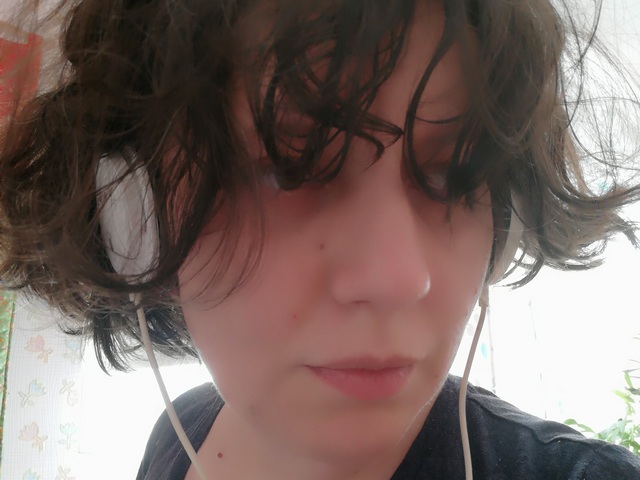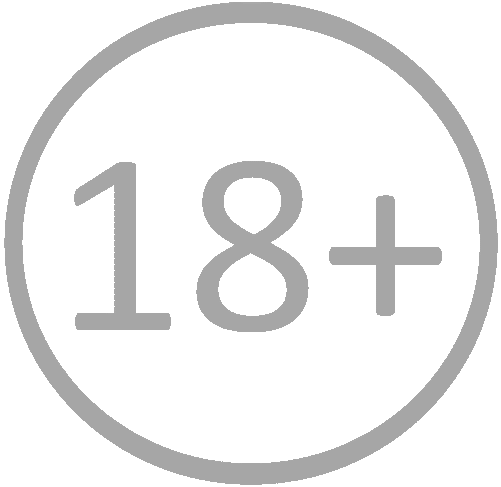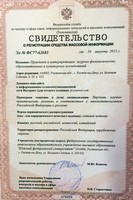
ПРОБЫ ПОСТСОВЕТСКОГО ПОЗИРОВАНИЯ
Аннотация
Эта статья о том, как тела, фотокамера и газета делают постсоветское состояние и социальные изменения 90-х видимыми. Она посвящена истории неловкости, выявленной в акте фотосъемки. Автор работает с письмами и фотографиями, которые читательницы и читатели «Комсомольской правды» присылали в 1996–2000 гг. на гибридный конкурс красоты «Мисс КП», объявленный газетой. Неловкость или же неполнота, неумелость, неточность воплощения обнаруживается и в дискурсивных фигурах писем, и в некогерентном соседстве текстов и фотографий, и в способах фотографического позирования. В многообразии проявлений этой неловкости автор видит эффекты постсоветского экспериментирования с выявлением себя через тело и корпореальные тактики освоения нового в ситуации, когда изменяются телесные образцы достоинства, успеха, красоты, привлекательности, актуализируемые в позировании перед камерой.
Перспектива, задаваемая социальными исследованиями тела и визуальными исследованиями, здесь совмещается с аналитикой интердискурсивности и медиа. Эта комбинация позволяет формулировать и на внятном эмпирическом материале отвечать на следующие вопросы: как люди через свои тела вовлекаются в социальные изменения и участвуют в них? Как трансформации и сдвиги первого постсоветского десятилетия проявляются через телесные практики в целом и фотографическое позирование для конкурса красоты в частности? Как современницы распада Советского Союза добровольно или вынужденно переоткрывают свои тела заново?
Текст состоит из трех частей. Сначала понятие неловкости уточняется через детализацию ее связи с воплощением. Затем конкурс красоты от «Комсомольской правды» описывается в своей гетерогенности как диспозитив постсоветских изменений. И, наконец, проявления неловкости, запечатленные на конкурсных фотографиях и спровоцированные в ситуации фотосъемки, становятся предметом специального анализа.
Ключевые слова: позирование, воплощение, неловкость, социальные изменения, конкурс красоты, газеты, корпореальный поворот, постсоветское состояние, девяностые.
DOI 10.23683/2415-8852-2019-1-53-70
Полный текст:
PDFЛитература
Адоньева, С. Ближний круг [Электронный ресурс]. URL: http://www.pragmema.ru/ru/ tobetogether-the-inner-circle (дата обращения: 12.01.19).
Берджер, Дж. Костюм и фотография // Берджер Дж. Фотография и ее предназначение / пер. с анг. А. Аслянян. М.: Ад Маргинем Пресс, 2014. С. 57–68.
Бурдье, П. Практический смысл / пер. с фр. под ред Н. Шматко. СПб.: Алетейя, 2001. Булгакова, О. Фабрика жестов. М.: НЛО, 2005.
Гавришина, О. «Снимаются у фотографа». Режимы тела в советской студийной фотографии // Гавришина О. Империя света. М.: НЛО, 2008. С. 31–43.
Либоракина, М. Обретение силы: российский опыт. М.: ЧеРо, 1996.
Мерло-Понти, М. Феноменология восприятия / пер. с фр. под ред. И. Вдовиной, С. Фокина. СПб.: Наука, 1999.
Новикова, А. «Комсомолка»: история, которой можно гордиться // Комсомольская правда, 22 августа 2017.
Орлова, Г. Разрыв. Обнажение «Комсомолки» // Неприкосновенный запас. 2019. 125. 169–195.
Хелльбек, Й. Революция от первого лица: дневники сталинской эпохи / пер. с англ. С. Чачко. М.: НЛО, 2017.
Шкулев, В. Страна нашей газеты // Журналист,1995. 5. 22–23.
Attwood, L. (1999). Creating the new Soviet woman: Women’s magazines as engineers of female identity, 1922–53. Basingstoke: Macmillan.
Boehm, G., Mitchell, T. (2009). Pictorial versus Iconic Turn: Two Letters // Culture, Theory and Critique. 50(2–3), 103–121.
Bourdieu, P. (1990). In Other Words. Cambridge: Polity.
Bourdieu, P. (2000). Pascalian meditations. Stanford University Press.
Butler, J. (1988). Performative acts and gender constitution: An essay in phenomenology and feminist theory // Theatre Journal, .40(4), 519–531.
Crossley, N. (2003). From reproduction to transformation: Social movement fields and the radical habitus // Theory, culture & society, 20(6), 43–68.
Crossley, N. (2013). Habit and habitus // Body & Society. 19(2–3), 136–161.
Crossley, N. (2004). The circuit trainer’s habitus: Reflexive body techniques and the sociality of the workout // Body & society. 10(1), 37–69.
Davidenko, M. (2018). Multiple femininities in two Russian women’s magazines, 1970s–1990s // Journal of Gender Studies. 27(4), 445–463.
Fairclough, N. (2011). Discursive hybridity and social change in Critical Discourse Analysis // Unpublished public lecture. Naples.
Farnell, B. (2012). Dynamic embodiment for social theory: I move therefore I am. Routledge.
Gilleard, Ch., Higgs, P. (2015). Aging, embodiment, and the somatic turn // Age, Culture, Humanities: An Interdisciplinary Journal. 2, 17–33.
Ilic, M. (2014). Women and Competition in State Socialist Societies: Soviet-era Beauty Contests / Competition in Socialist Society. Studies in the History of Russia and Eastern Europe. L.: Routledge, 159–175.
Jay, M. (1996). Vision in context: reflections and refractions / T. Brennan, M. Jay (eds.). Vision in context: Historical and contemporary perspectives on sight. Routledge, 1–15.
Kalacheva, O. (2002). A western body for the Russian woman: Shaping gender identity in modern women’s magazines. Anthropology of East Europe Review, 20, 75–78.
Manovich, L. (2012). Museum without walls, art history without names: visualization methods for Humanities and Media Studies / Software Studies Initiative. Retrieved from: http:// manovich.net/content/old/03-articles/71-article-2012/71-article-2012.pdf (date of access: 7.01.19).
Manovich, L. (2013). Visualizing Vertov. In Russian Journal of Communication, 5(1), 44–55.
Porteous, H. (2017). From Barbie to the oligarch’s wife: Reading fantasy femininity and globalisation in post-Soviet Russian women’s magazines. In European Journal of Cultural Studies, 20(2), 180–198.
Ratilainen, S. (2015). Old title, new traditions. In Feminist Media Studies, 15, 92–112.
Stephenson, S. (2007). The changing face of women’s magazines in Russia. In Journalism Studies, 8(4), 613–620.
Wu, J. (2011). Understanding Interdiscursivity: A Pragmatic Model? Journal of Cambridge Studies, 6(2–3), 95–115.
References
Adon’eva, S. Blizhnij krug [The Inner Circle]. Retrieved from: http://www.pragmema.ru/ru/ tobetogether-the-inner-circle (date of access: 12.01.19).
Attwood, L. (1999). Creating the new Soviet woman: Women’s magazines as engineers of female identity, 1922–53. Basingstoke: Macmillan.
Berger, J. (2014). Kostyum i fotografiya [The Suit and the photograph]. In Berger J. Fotografiya i ee prednaznachenie. Trans. A. Aslyanyan. Moscow: Ad Marginem Press, 57–68.
Boehm, G., Mitchell, T. (2009) Pictorial versus Iconic Turn: Two Letters. In Culture, Theory and Critique, 50(2–3), 103–121.
Bourdieu, P. (2001). Prakticheskij smysl [Practical Sense]. In N. Shmatko (Trans. ed.). SPb.: Aletejya.
Bourdieu, P. (2000). Pascalian meditations. Stanford University Press.
Bourdieu, P. (1990) In other words. Cambridge: Polity.
Bulgakova, O. (2005). Fabrika zhestov [The Factory of Gestures: Body Language in Film]. Moscow: NLO.
Butler, J. (1988). Performative acts and gender constitution: An essay in phenomenology and feminist theory. In Theatre Journal, 40(4), 519–531.
Crossley, N. (2013). Habit and habitus. In Body & Society, 19(2-3), 136–161.
Crossley, N. (2004). The circuit trainer’s habitus: Reflexive body techniques and the sociality of the workout. In Body & society, 10(1), 37–69.
Crossley, N. (2003). From reproduction to transformation: Social movement fields and the radical habitus. In Theory, culture & society, 20(6), 43–68.
Davidenko, M. (2018). Multiple femininities in two Russian women’s magazines, 1970s– 1990s, In Journal of Gender Studies, 27(4), 445– 463.
Fairclough, N. (2011). Discursive hybridity and social change in Critical Discourse Analysis. Unpublished public lecture. Naples.
Farnell, B. (2012). Dynamic embodiment for social theory: I move therefore I am. Routledge.
Gavrishina, O. (2008). “Snimayutsya u fotografa”. Rezhimy tela v sovetskoj studijnoj fotografii [Removed by the photographer: Regimes of the body in Soviet studio photography].In Gavrishina O. Imperiya sveta. Moscow: NLO, 31–43.
Gilleard, Ch., Higgs, P. (2015). Aging, embodiment, and the somatic turn. In Age, Culture, Humanities: An Interdisciplinary Journal, 2, 17–33.
Hellbek, J. (2017). Revolyuciya ot pervogo lica: dnevniki stalinskoj epohi [Revolution on My Mind: Writing a Diary under Stalin]. In S. Chachko (Trans.). Moscow: NLO.
Ilic, M. (2014). Women and Competition in State Socialist Societies: Soviet-era Beauty Contests. In Competition in Socialist Society. Studies in the History of Russia and Eastern Europe. London: Routledge, 159–175.
Jay, M. (1996). Vision in context: reflections and refractions. In T. Brennan, M. Jay (eds.). Vision in context: Historical and contemporary perspectives on sight. Routledge, 1–15.
Kalacheva, O. (2002). A western body for the Russian woman: Shaping gender identity in modern women’s magazines. Anthropology of East Europe Review, 20, 75–78.
Liborakina, M. (1996). Obretenie sily: rossijskij opyt [Gained Strength: Russian experience]. Moscow: CHeRo.
Manovich, L. (2012). Museum without walls, art history without names: visualization methods for Humanities and Media Studies. In Software Studies Initiative. Retrieved from: http:// manovich.net/content/old/03-articles/71-article-2012/71-article-2012.pdf (date of access: 7.01.19).
Manovich, L. (2013). Visualizing Vertov. In Russian Journal of Communication, 5(1), 44– 55.
Merleau-Ponty, M. (1999). Fenomenologiya vospriyatiya [The Phenomenology of Perception]. In I. Vdovina, S. Fokin (Trans. ed.). SPb.: Nauka, 1999.
Novikova, A. (2017). “Komsomolka”: istoriya, kotoroj mozhno gordit’sya [Komsomolka: a history to be proud of]. Komsomol’skaya pravda, 22 august 2017.
Orlova, G. (2019). Razryv. Obnazhenie “Komsomolki” [The Gap. Exposure of the “Komsomolka”]. Neprikosnovennyj zapas, 125, 169 – 195.
Porteous, H. (2017). From Barbie to the oligarch’s wife: Reading fantasy femininity and globalisation in post-Soviet Russian women’s magazines. In European Journal of Cultural Studies, 20(2), 180–198.
Ratilainen, S. (2015). Old title, new traditions. In Feminist Media Studies, 15, 92–112. Shkulev, V. (1995). Strana nashej gazety [The Country of our Newspaper]. Zhurnalist, 5, 22–23.
Stephenson, S. (2007). The changing face of women’s magazines in Russia. Journalism Studies, 8(4), 613–620.
Wu, J. (2011). Understanding Interdiscursivity: A Pragmatic Model? Journal of Cambridge Studies, 6(2–3), 95–115.
Ссылки
- На текущий момент ссылки отсутствуют.
(c) 2019 Галина Анатольевна Орлова
ISSN 2415-8852
Свидетельство о регистрации СМИ Эл № ФС77-62683 от 10 августа 2015 г.
Регистрирующий орган: Федеральная служба по надзору в сфере связи, информационных технологий и массовых коммуникаций (Роскомнадзор)
УЧРЕДИТЕЛЬ: ФГАОУ ВО "Южный федеральный университет".
344006, г. Ростов-на-Дону, ул. Большая Садовая, 105/42,
тел. +7 (863) 218-40-00 E-mail: info@sfedu.ru
Адрес редакции: 344006, г. Ростов-на-Дону, пер. Университетский, 93, к. 8, тел. +7(903) 43-12-321
e-mail: oadzhumaylo@sfedu.ru

Произведения доступны по лицензии
Creative Commons «Attribution» («Атрибуция») 4.0 Всемирная.

